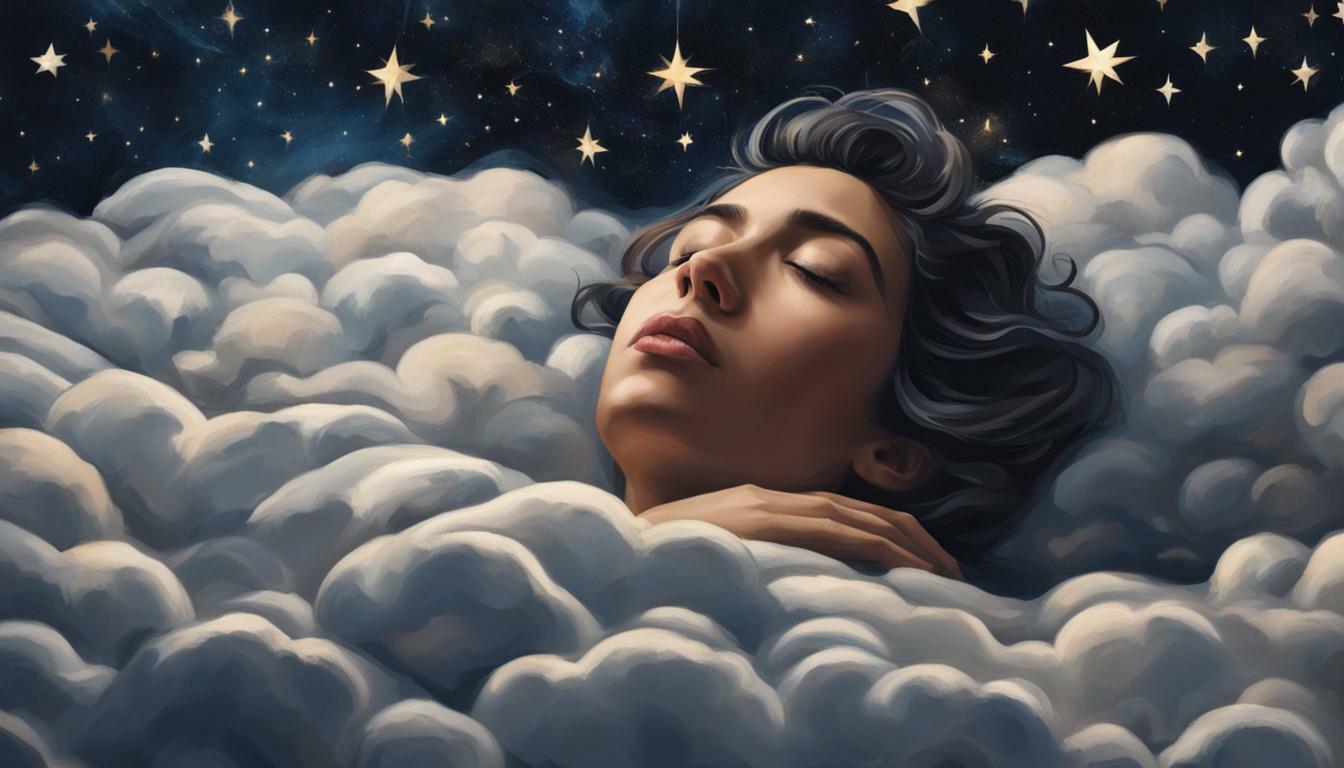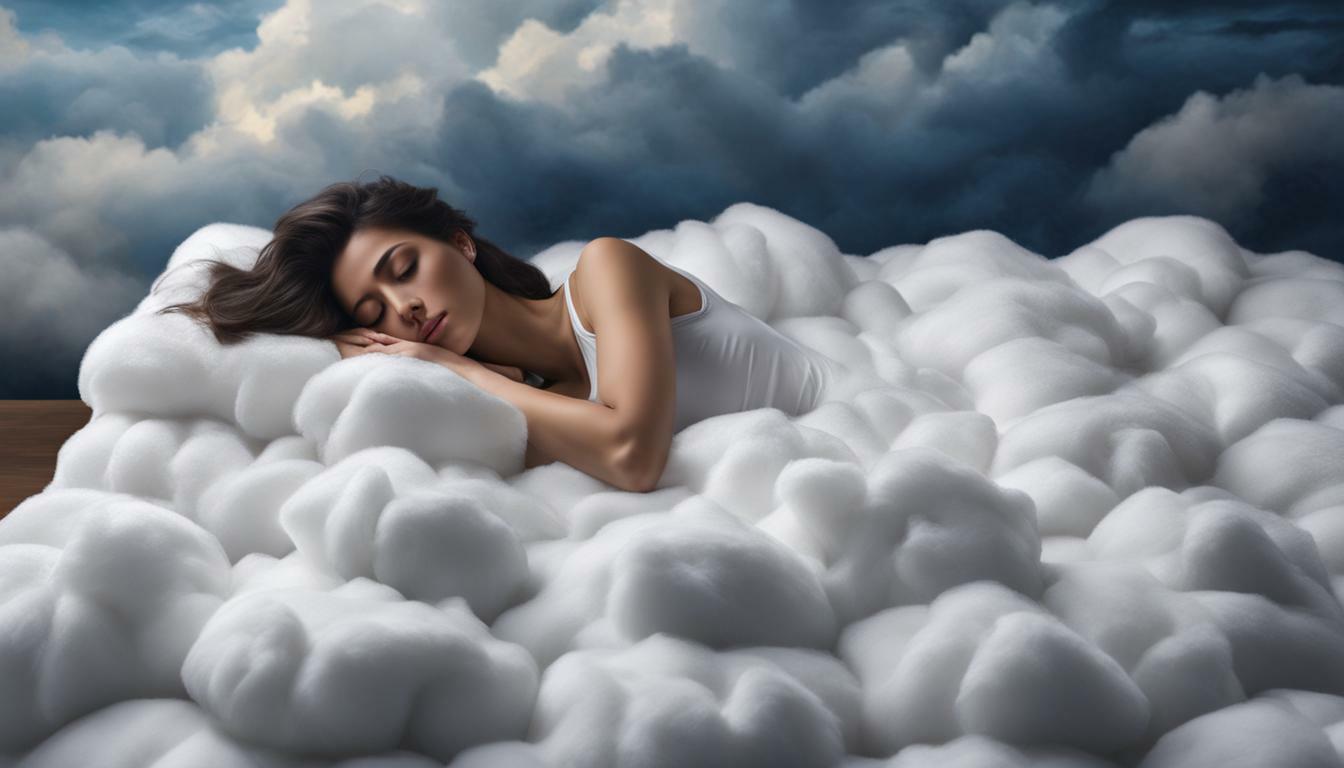Tapestry pillows are a wonderful addition to any home decor. They add a touch of artistry and elegance to both indoor and outdoor spaces. If you’re interested in learning more about tapestry pillows and how they can enhance your living space, keep reading!
Understanding the Art of Tapestry
Tapestry weaving is an ancient art form that has been practiced for centuries. It involves creating intricate designs by weaving colored threads onto a loom. The result is a beautiful piece of fabric that can be used for various purposes, including creating tapestry pillows.
When delving into the world of tapestry weaving, it is fascinating to explore the rich history behind this art form. The history of tapestry weaving dates back to ancient civilizations such as Egypt and China. These early civilizations recognized the beauty and versatility of tapestries, using them to depict important events, tell stories, and decorate their living spaces.
During the Middle Ages and Renaissance period, tapestries reached the height of their popularity. They adorned the walls of castles and palaces, adding a touch of luxury and grandeur to these spaces. Tapestry weaving became a highly regarded craft, with skilled artisans dedicating their time and expertise to create masterpieces that would be cherished for generations to come.
Today, tapestry weaving has evolved into a popular craft that allows artists to express their creativity and create unique tapestry pillows. The art form has expanded beyond its traditional roots, embracing a wide range of styles and techniques.
History of Tapestry Weaving
The history of tapestry weaving is a tapestry in itself, woven with threads of culture, tradition, and artistic expression. Ancient civilizations like Egypt and China were pioneers in this art form, using tapestries to capture the essence of their society. In Egypt, tapestries were used to depict scenes from daily life, religious rituals, and even the pharaohs’ triumphs. In China, tapestries were intricately woven with silk threads, showcasing the country’s rich cultural heritage.
As tapestry weaving spread across Europe, it became an integral part of the Middle Ages and Renaissance period. The nobility and clergy commissioned tapestries to adorn their palaces and churches, turning these spaces into visual narratives of power and prestige. These tapestries often depicted historical events, mythological stories, and scenes from nature, showcasing the artistic skills of the weavers and their ability to bring stories to life through threads.
During the 17th and 18th centuries, tapestry weaving experienced a decline in popularity as other art forms took center stage. However, it experienced a revival during the Arts and Crafts movement in the late 19th century. Artists and designers began to appreciate the intricate craftsmanship and unique qualities of tapestries, leading to a resurgence of interest in this ancient art form.
Different Styles of Tapestry
One of the fascinating aspects of tapestry weaving is the wide range of styles it encompasses. Traditional tapestry often features historical scenes, landscapes, or floral designs. These tapestries transport us to different eras and cultures, capturing the essence of a bygone time. They can be seen as windows into history, allowing us to appreciate the artistry and craftsmanship of past generations.
Modern tapestry, on the other hand, pushes the boundaries of traditional techniques and explores new artistic possibilities. It may incorporate abstract patterns, geometric shapes, or experimental color combinations. These contemporary tapestries challenge our perceptions of what tapestry can be, blurring the lines between art and craft.
When choosing a tapestry pillow, consider your personal style and the overall aesthetic of your home. Traditional tapestry pillows can add a touch of elegance and sophistication to a classic interior, while modern tapestry pillows can bring a bold and contemporary vibe to a space. Whether you prefer the timeless charm of historical tapestries or the innovative designs of modern tapestries, there is a tapestry pillow out there that will perfectly complement your style.
The Making of Tapestry Pillows
Creating tapestry pillows requires skill, attention to detail, and a deep understanding of the art of weaving. Let’s take a closer look at the materials used and the intricate process of weaving tapestry pillows.
Materials Used in Tapestry Pillows
Tapestry pillows are not just ordinary pillows; they are masterpieces crafted with the utmost care and precision. To ensure durability and longevity, these pillows are made using only the finest materials available. The fabric used for the pillow cover is often a blend of natural fibers such as cotton or wool, carefully selected for their exceptional quality. These fibers provide a soft and comfortable texture, making the pillows perfect for both decorative and functional use.
But the materials used in tapestry pillows go beyond just the fabric. Skilled artisans also incorporate various threads, including silk and metallic threads, to add a touch of elegance and sophistication to the design. These threads shimmer and catch the light, enhancing the overall beauty of the tapestry.
The Process of Weaving Tapestry Pillows
Weaving tapestry pillows is a true labor of love, requiring immense patience, dedication, and a keen eye for detail. The process begins with the artisan setting up a loom, a complex apparatus that serves as the foundation for the weaving process. Each thread is meticulously threaded through the loom, creating the warp, which acts as the vertical framework for the tapestry.
Once the loom is set up, the artisan carefully selects the colors and threads to be used in the design. This decision is not made lightly; it requires a deep understanding of color theory and an artistic vision. The chosen threads are then wound onto bobbins, ready to be woven into the tapestry.
With the loom prepared and the threads in place, the artisan begins the weaving process. Following the pattern, they skillfully interlace the weft threads with the warp threads, gradually building up the intricate design. This meticulous process requires unwavering attention to detail, as even the slightest deviation can alter the final result.
As the artisan weaves, the tapestry begins to take shape, revealing its mesmerizing beauty. The colors blend harmoniously, creating intricate patterns and captivating imagery. It is a slow and deliberate process, one that cannot be rushed.
Once the weaving is complete, the fabric is carefully cut from the loom, preserving the integrity of the design. The next step is to transform the woven fabric into a functional work of art. The artisan meticulously sews the fabric into a pillow cover, ensuring that every stitch is precise and secure.
Finally, the tapestry pillow is complete, ready to be enjoyed and admired. Each pillow tells a unique story, reflecting the skill and creativity of the artisan who brought it to life. Whether displayed as a decorative accent or used for comfort, these tapestry pillows add a touch of elegance and sophistication to any space.
Types of Tapestry Pillows
Tapestry pillows come in various types, each offering a unique style and charm. Let’s explore some of the most popular types of tapestry pillows.
Traditional Tapestry Pillows
Tapestry pillows have a rich history that dates back centuries. Traditional tapestry pillows often feature classic designs and intricate patterns, inspired by various cultures and artistic movements. These pillows are meticulously crafted using traditional weaving techniques, resulting in a luxurious and timeless piece of decor.
One popular type of traditional tapestry pillow is the floral tapestry pillow. These pillows showcase beautiful and vibrant floral motifs, reminiscent of lush gardens and blooming flowers. The intricate detailing and color combinations create a visually stunning piece that adds a touch of elegance to any room.
Another type of traditional tapestry pillow is the historical tapestry pillow. These pillows depict scenes from historical events, famous artworks, or cultural symbols. They serve as a visual narrative, capturing the essence of a particular era or artistic style. Historical tapestry pillows are not only decorative but also educational, allowing you to immerse yourself in the stories and heritage they represent.
Modern Tapestry Pillows
While traditional tapestry pillows embrace the past, modern tapestry pillows embrace the present and future. These pillows offer a contemporary twist, incorporating bold colors, abstract patterns, and unconventional designs. They are perfect for those who want to make a statement and add a modern edge to their decor.
One popular type of modern tapestry pillow is the geometric tapestry pillow. These pillows feature clean lines, geometric shapes, and vibrant colors, creating a visually striking and dynamic piece. Geometric tapestry pillows are versatile and can complement various interior design styles, from minimalist to eclectic.
Another type of modern tapestry pillow is the pop art tapestry pillow. Inspired by the vibrant and bold art movement of the 1950s and 1960s, these pillows showcase bright colors, graphic patterns, and iconic imagery. Pop art tapestry pillows inject a sense of fun and playfulness into any space, making them a popular choice for contemporary and eclectic interiors.
Whether you prefer the timeless elegance of traditional tapestry pillows or the bold and contemporary designs of modern tapestry pillows, there is a wide range of options to choose from. Each type of tapestry pillow brings its own unique style and charm, allowing you to express your personality and create a visually captivating space.
Caring for Your Tapestry Pillows
To ensure the longevity of your tapestry pillows, it’s important to give them proper care and maintenance. Here are some tips to help you keep your tapestry pillows looking their best.
Cleaning and Maintenance Tips
When it comes to cleaning your tapestry pillows, it’s best to follow the manufacturer’s instructions. In general, spot cleaning is recommended to remove any stains or dirt. However, it’s important to note that different tapestry fabrics may require different cleaning methods. For example, some tapestry pillows may be dry-clean only, while others can be gently hand-washed.
If you’re unsure about the appropriate cleaning method for your tapestry pillows, it’s always a good idea to consult with a professional cleaner who specializes in tapestry fabrics. They will have the knowledge and expertise to safely clean your pillows without causing any damage.
In addition to regular cleaning, it’s also important to regularly fluff and rotate your tapestry pillows. This helps to maintain their shape and prevent uneven wear and tear. By rotating your pillows, you ensure that they are evenly exposed to light and pressure, which can help prolong their lifespan.
Preserving the Color and Texture
To preserve the vibrant colors and delicate texture of your tapestry pillows, it’s important to protect them from direct sunlight and extreme temperatures. Sunlight can cause the colors to fade over time, while extreme temperatures can weaken the fabric fibers.
Consider placing your tapestry pillows in areas with minimal exposure to sunlight. If you have windows with direct sunlight, you may want to use curtains or blinds to block out the harsh rays. Additionally, avoid placing your pillows near heating or cooling vents, as the constant airflow can cause the fabric to dry out and become brittle.
Using pillow covers or cases can provide an extra layer of protection for your tapestry pillows. Not only do they help shield the pillows from dirt and stains, but they also act as a barrier against sunlight and temperature fluctuations. Look for covers made from breathable materials, such as cotton or linen, to allow air circulation and prevent moisture buildup.
When it comes to storing your tapestry pillows, it’s important to choose a clean and dry environment. Avoid storing them in damp basements or attics, as the moisture can promote mold and mildew growth. Instead, opt for a cool and well-ventilated area, such as a closet or linen cabinet.
By following these cleaning and maintenance tips, you can ensure that your tapestry pillows remain beautiful and in pristine condition for years to come. Remember, proper care and attention are key to preserving the quality and longevity of your beloved tapestry pillows.
Incorporating Tapestry Pillows into Your Decor
Tapestry pillows can be a versatile addition to your home decor. Whether you prefer a minimalist aesthetic or a bohemian vibe, here are some tips for incorporating tapestry pillows into your space.
Choosing the Right Tapestry Pillow for Your Space
When choosing a tapestry pillow, consider the color palette and overall theme of your room. If your space is neutral, opt for pillows with bold colors to add a pop of contrast. On the other hand, if your room is already filled with vibrant colors, choose pillows with subtle patterns or textures to create a harmonious look.
For example, if you have a modern living room with a monochromatic color scheme, you can choose a tapestry pillow with a geometric pattern in bold, contrasting colors. This will instantly add visual interest and break up the monotony of the room. On the other hand, if your bedroom has a bohemian theme with lots of rich, earthy tones, you can opt for a tapestry pillow with a subtle floral pattern or intricate embroidery to enhance the cozy and eclectic vibe.
Furthermore, consider the size and shape of the tapestry pillow. If you have a large sofa, you can choose oversized square pillows to create a luxurious and inviting look. On the other hand, if you have a smaller armchair, you can opt for smaller rectangular pillows to add a touch of elegance without overwhelming the space.
Styling Tips for Tapestry Pillows
There are numerous ways to style tapestry pillows to spruce up your living space. You can place them on your sofa, armchair, or bed for a cozy and inviting feel. Mixing and matching different patterns and textures can add visual interest and create a dynamic look.
For instance, if you have a neutral-colored sofa, you can layer tapestry pillows with different patterns and textures to create a visually stunning display. You can mix a floral tapestry pillow with a striped one and a solid-colored velvet pillow to create a bohemian-inspired look. Alternatively, if you have a vibrant, patterned armchair, you can choose a tapestry pillow with a complementary color scheme to tie the whole look together.
Don’t be afraid to experiment and let your personal style shine through! If you have a love for vintage aesthetics, you can incorporate tapestry pillows with intricate designs and antique-inspired patterns. On the other hand, if you prefer a more contemporary look, you can choose tapestry pillows with bold, abstract patterns to add a touch of modernity to your space.
Remember, tapestry pillows are not just limited to your living room or bedroom. You can also use them to add a cozy and inviting touch to your outdoor seating area. Whether you have a patio, balcony, or deck, tapestry pillows can instantly transform your outdoor space into a stylish and comfortable oasis.
In conclusion, tapestry pillows are a versatile and stylish addition to any home decor. By carefully choosing the right tapestry pillow for your space and experimenting with different styling techniques, you can create a visually stunning and inviting atmosphere in your home. So go ahead, embrace the beauty of tapestry pillows and let your creativity soar!
Buying Guide for Tapestry Pillows
If you’re in the market for tapestry pillows, here are some things to consider when making your purchase.
What to Look for When Buying
When buying tapestry pillows, pay attention to the quality of both the fabric and the craftsmanship. Look for pillows made with durable materials and well-constructed seams. Additionally, consider the size and shape of the pillows to ensure they fit seamlessly into your home decor.
Where to Buy Quality Tapestry Pillows
You can find a wide variety of tapestry pillows at both brick-and-mortar stores and online retailers. Popular home decor stores often carry a selection of tapestry pillows. Additionally, there are numerous artisanal online marketplaces where you can find unique and handmade tapestry pillows. Take your time to browse and compare options to find the perfect tapestry pillows for your space.
FAQs
1. Are tapestry pillows only for decorative purposes?
While tapestry pillows are often used for decorative purposes, they can also provide comfort and support. The soft fabric and plush filling make them perfect for lounging or adding extra cushioning to your seating.
2. Can tapestry pillows be used outdoors?
Not all tapestry pillows are suitable for outdoor use. If you plan to use them outdoors, look for pillows made with weather-resistant materials and fade-resistant fabrics. This will ensure that your tapestry pillows can withstand the elements and maintain their beauty over time.
3. How can I change the look of my tapestry pillows?
If you’re looking to switch up the look of your tapestry pillows, consider using pillow covers. There are countless designs and patterns available, allowing you to easily change the look of your pillows without investing in new ones.
4. Can I wash my tapestry pillows in the washing machine?
It’s best to avoid washing tapestry pillows in the washing machine, as this can damage the delicate fabric and intricate design. Instead, spot clean any stains or dirt using a mild detergent and a soft cloth.
5. Can tapestry pillows be used in minimalist decor?
Absolutely! Tapestry pillows can add a touch of warmth and texture to minimalist decor. Opt for pillows with simple patterns or neutral colors to create a cohesive look.
6. Are tapestry pillows suitable for all seasons?
Yes, tapestry pillows can be used year-round. During the colder months, they can provide added warmth and coziness. In the warmer months, you can pair them with lighter textiles to create a breezy and inviting atmosphere.
7. Can tapestry pillows be customized?
Many artisans and retailers offer customization options for tapestry pillows. You can choose the colors, patterns, and even the size to create a truly unique piece that reflects your style and personality.



